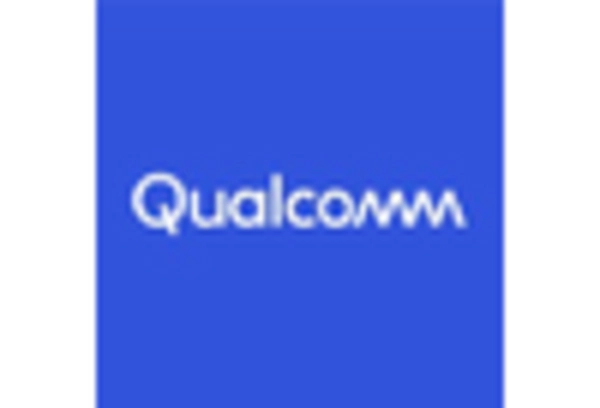Growing Focus on Passenger Experience
Enhancing passenger experience is a critical driver for the 5g aviation market. Airlines are investing in technologies that provide seamless connectivity and entertainment options during flights. With 5G, passengers can enjoy high-definition streaming, online gaming, and other interactive services. This focus on improving the travel experience is reflected in the projected growth of the in-flight entertainment market, which is expected to reach $6 billion by 2026. As airlines prioritize customer satisfaction, the 5g aviation market will likely see increased adoption of advanced connectivity solutions.
Increased Demand for Data-Driven Services
The 5g aviation market is experiencing a surge in demand for data-driven services, which are becoming essential for modern air travel. Airlines are increasingly leveraging data analytics to optimize operations, enhance customer experiences, and improve safety measures. The integration of 5G technology enables real-time data processing and communication between aircraft and ground control.. This capability is expected to reduce operational costs by up to 15% while improving flight safety and efficiency. As airlines recognize the value of data-driven insights, the 5g aviation market is likely to expand significantly.
Technological Advancements in Communication
The The 5G aviation market is poised for growth. due to rapid advancements in communication technologies. The introduction of 5G networks enables faster data transmission, lower latency, and improved connectivity for aircraft systems. This technological evolution is expected to enhance in-flight services, allowing airlines to offer high-speed internet access to passengers. According to industry estimates, the demand for in-flight connectivity is projected to reach $8 billion by 2025. As airlines adopt these technologies, the 5g aviation market will likely experience increased investment in infrastructure and services, driving overall market growth.
Regulatory Support for Advanced Technologies
The 5g aviation market benefits from regulatory support aimed at facilitating the adoption of advanced technologies. Government agencies are actively working to establish frameworks that promote the safe integration of 5G networks within aviation. This includes guidelines for spectrum allocation and safety standards for in-flight connectivity systems. As regulations evolve, they are expected to create a more favorable environment for investment in the 5g aviation market. The anticipated regulatory clarity may encourage airlines to adopt innovative technologies, further driving market growth.
Partnerships and Collaborations in the Industry
Strategic partnerships and collaborations are emerging as a vital driver in the 5g aviation market. Airlines, technology providers, and telecommunications companies are increasingly joining forces to develop and implement 5G solutions tailored for aviation. These collaborations enable the sharing of expertise and resources, accelerating the deployment of advanced connectivity systems. For instance, partnerships between airlines and tech firms can lead to innovative applications that enhance operational efficiency and passenger services. As these alliances strengthen, the 5g aviation market is likely to witness accelerated growth and innovation.

















Leave a Comment